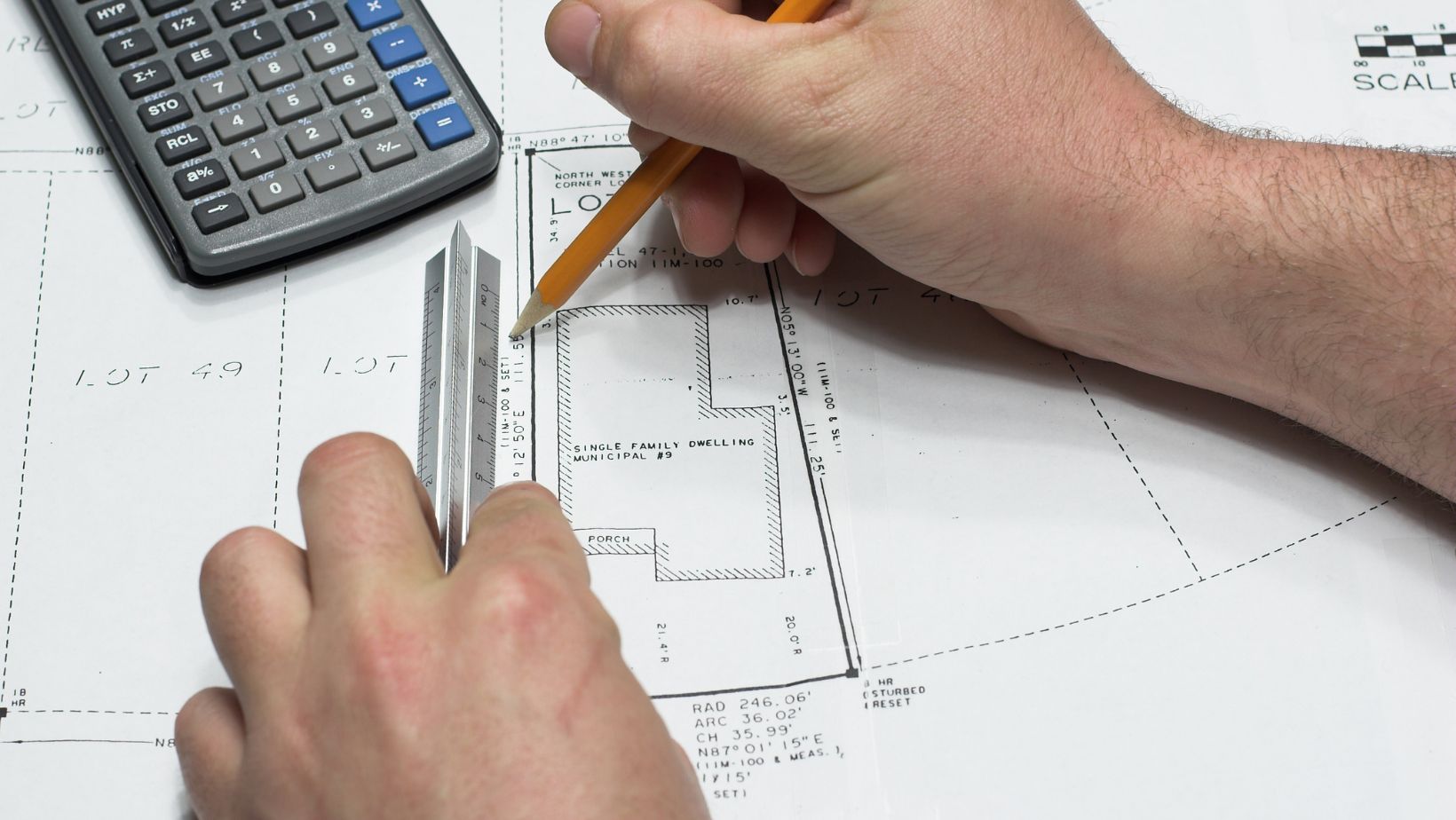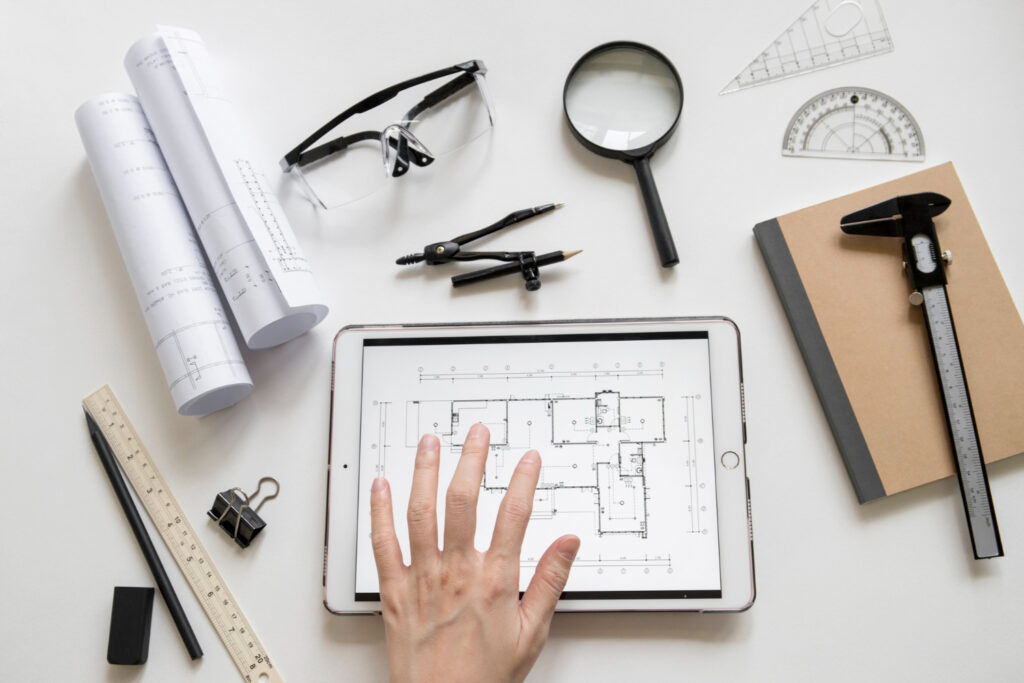Table of Contents
ToggleThe world’s skylines, neighborhoods, and public spaces are born from a seamless partnership between vision and precision—between architects and surveyors. While architects bring creative insight and aesthetic foresight, surveyors provide the exact data needed to turn those ideas into reality. This collaboration ensures that structures are not only beautiful and functional but also safe, legally compliant, and perfectly aligned with the landscape.
In the construction and development world, success depends heavily on how well these two professions communicate and coordinate. Let’s explore how surveyors and architects work together to design with precision.
The Role of Surveyors: Mapping the Foundation
Surveyors are responsible for measuring and mapping the land before any project begins. Their work forms the foundation upon which architects build their designs. Using tools like total stations, GPS equipment, and 3D laser scanners, surveyors gather accurate spatial data on land boundaries, topography, existing structures, underground utilities, and elevation changes.
A land survey isn’t just about outlining a property. It also includes crucial information like slope stability, soil composition, flood risks, and zoning restrictions. This data provides architects with a clear understanding of what is possible on a given plot. Without it, even the most beautiful design could face costly delays or even legal issues.
Architects: Visionaries with a Blueprint
Architects interpret a site’s conditions and transform them into spaces where people live, work, and thrive. They blend creativity with engineering knowledge, spatial awareness, and regulatory understanding to develop buildings that meet functional needs and design aspirations.
For an architect, designing without a proper land survey is like painting blindfolded. The details provided by surveyors—property lines, elevation grades, and existing infrastructure—allow architects to create designs that are realistic and buildable.
Points of Collaboration
The collaboration between surveyors and architects begins at the earliest stages of a project and continues through to construction. Here are the key phases where their partnership is essential:
1. Site Selection and Feasibility
Before any design work begins, surveyors assess a potential site’s viability. They provide data on boundaries, access points, easements, and environmental conditions. Architects use this information to evaluate whether their design vision can be realized within the constraints of the land.
2. Conceptual Design
Once a site is confirmed, architects start sketching ideas. Survey data helps them place buildings strategically to optimize views, sunlight, drainage, and accessibility. For example, understanding slope variations can influence whether a design includes a walk-out basement, retaining walls, or tiered levels.
3. Design Development
As the design evolves, precise topographic data is integrated into architectural software like AutoCAD, Revit, or BIM platforms. This enables architects to create accurate digital models that account for the terrain’s exact dimensions. Here, close collaboration is crucial. Surveyors might need to conduct additional scans to verify dimensions or confirm that utility lines are correctly located. For instance, a land surveyor in Sydney may be called upon multiple times throughout the design process to update data as site conditions or project requirements evolve.

Miscommunication at this stage can lead to structural errors or regulatory violations later on.
4. Permitting and Compliance
Survey data is often required to obtain building permits. Architects rely on surveyors to provide certified site plans and ensure that designs adhere to zoning laws, setbacks, and height restrictions. A strong relationship between the two professionals can expedite this bureaucratic phase and reduce the likelihood of rework.
5. Construction and Verification
Even during construction, surveyors continue to play a role by staking out building footprints and ensuring that structures are built precisely where and how they were designed. If changes are made on-site, updated surveys help architects adjust plans accordingly.
The Importance of Communication
At the heart of successful collaboration is communication. Surveyors and architects must speak a common language, even though their tools and training differ. Architects may visualize a building in 3D renderings, while surveyors work with point clouds and coordinates. Regular meetings, digital integrations, and mutual respect for each profession’s expertise are vital for a smooth workflow.
For example, surveyors can alert architects to potential issues like underground obstructions or boundary disputes early in the process. Likewise, architects can provide surveyors with design requirements that may affect which data points are prioritized in fieldwork.
Technology Bridging the Gap
Modern technology is making collaboration more efficient than ever. Tools like Building Information Modeling (BIM), geographic information systems (GIS), and cloud-based project management platforms enable real-time data sharing. Surveyors can upload their findings directly into architectural models, while architects can flag areas where more information is needed.

Drones, LiDAR scanning, and 3D photogrammetry also allow for highly detailed and up-to-date surveys, reducing the risk of outdated data leading to errors in the design process.
Conclusion: A Partnership That Shapes the Built Environment
The collaboration between surveyors and architects is one of precision meeting vision. While their roles may seem distinct, their goals are deeply aligned: to design and build safe, efficient, and beautiful structures. From residential homes to skyscrapers and infrastructure projects, their teamwork is evident in the accuracy of corners, the harmony of lines, and the seamless integration of design into the natural world.
In an industry where inches can make the difference between success and failure, surveyors and architects must continue working hand-in-hand, ensuring every structure stands as a testament to both creativity and precision.

